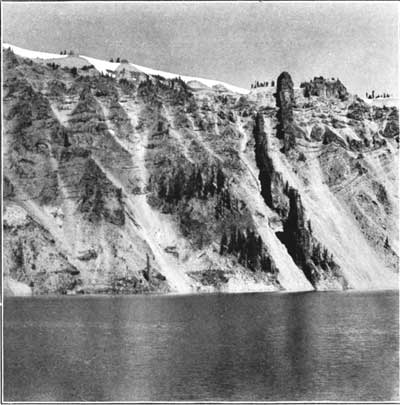Geological History of Crater Lake
At times of volcanic eruption the lava rises within the volcano until it either overflows the crater at the top or, by the great pressure of the column, bursts open the sides of the volcano and escapes through the fissure to the surface.

In the latter case, as the molten material cools, the fissure becomes filled with solid lava and forms a dike. The best example of this sort about Crater Lake appears along the inner slope directly north of Wizard Island, and is locally known as the Devils Backbone. It is shown in figure 5 across the left end of Wizard Island and in figure 18 a nearer view from the island itself. This dike rock, standing on edge, varies from 5 to 25 feet in thickness and cuts the rim from water to crest. Dikes are most numerous in the older portion of the rim under Llao Rock. They do not cut up through Llao Rock and are clearly older than the lava of which that rock is formed. Dikes occur at intervals all around the lake and radiate from it, suggesting that the central volcanic vent from which they issued must have been Mount Mazama.

